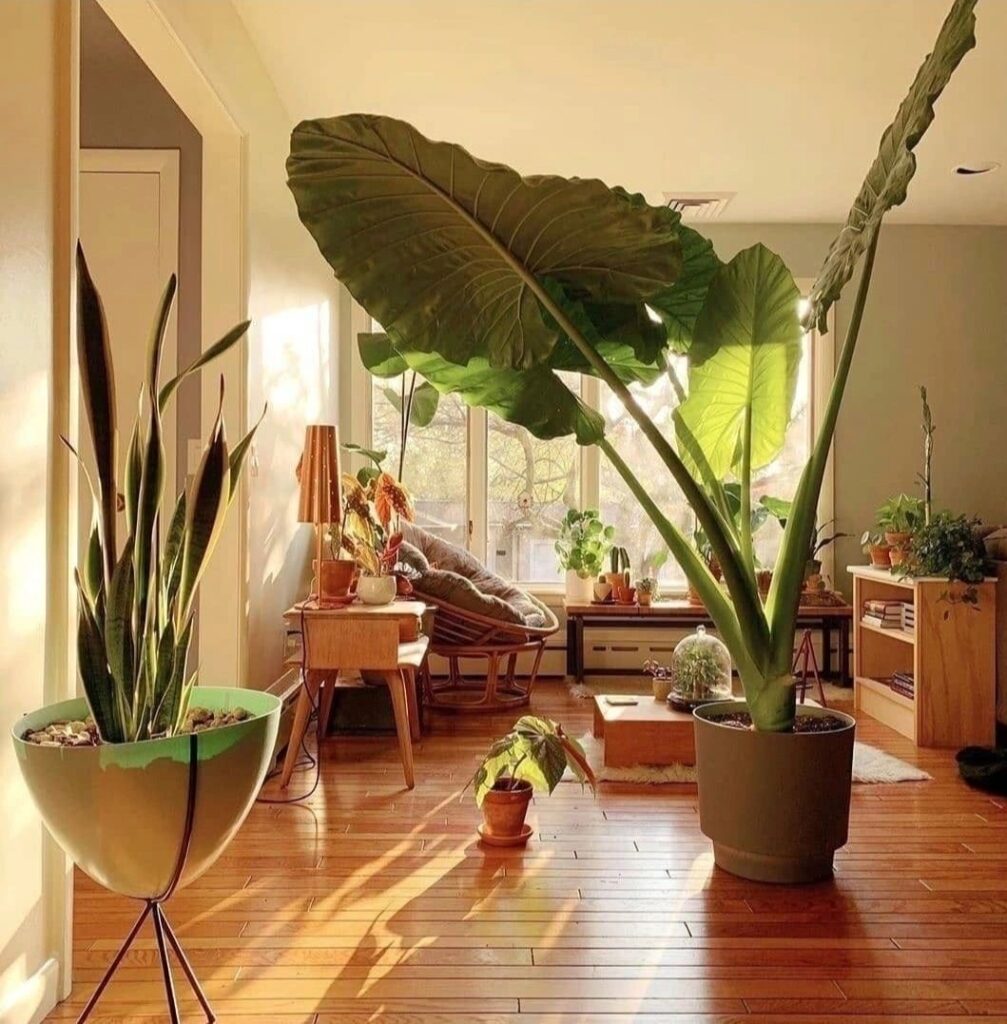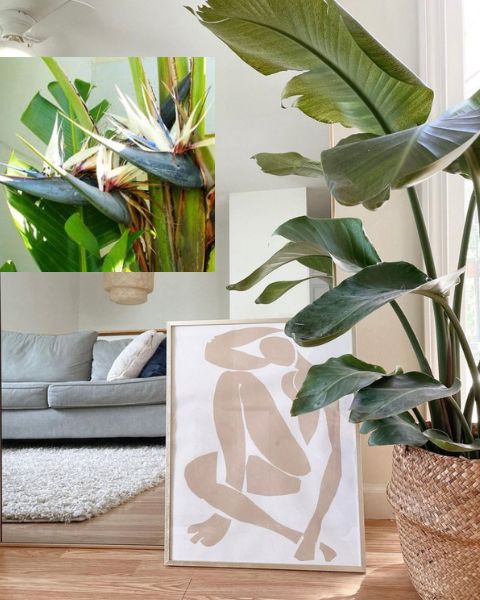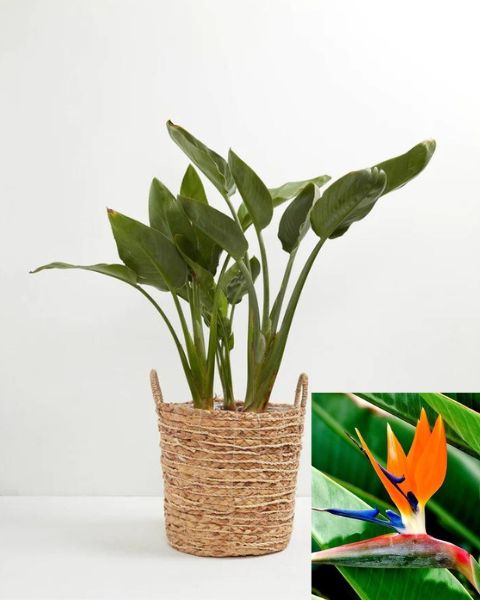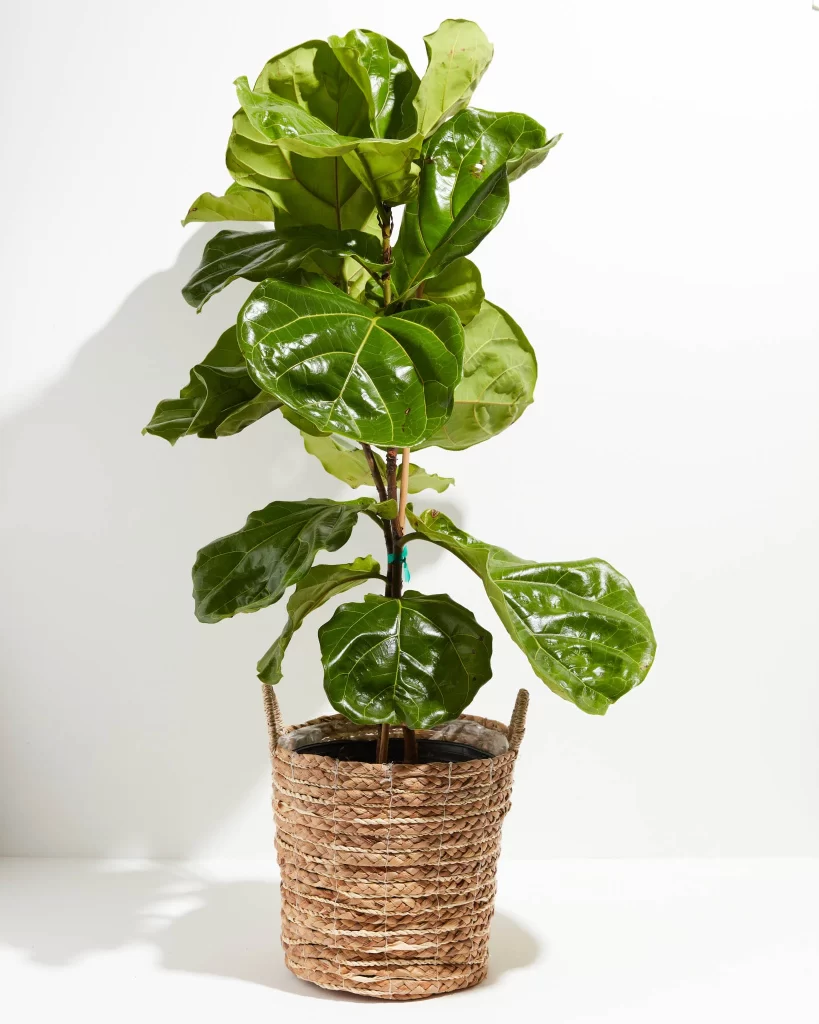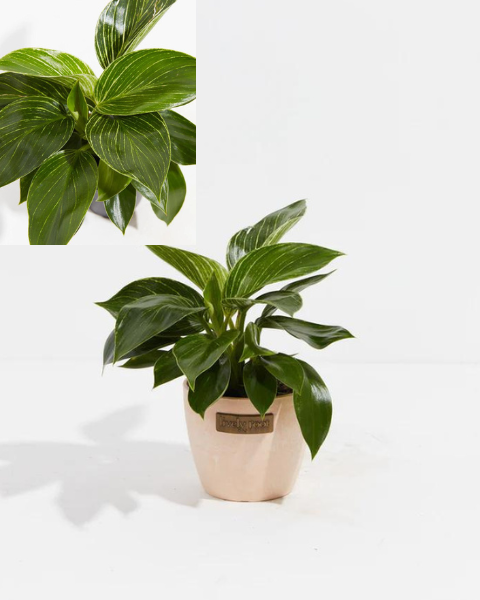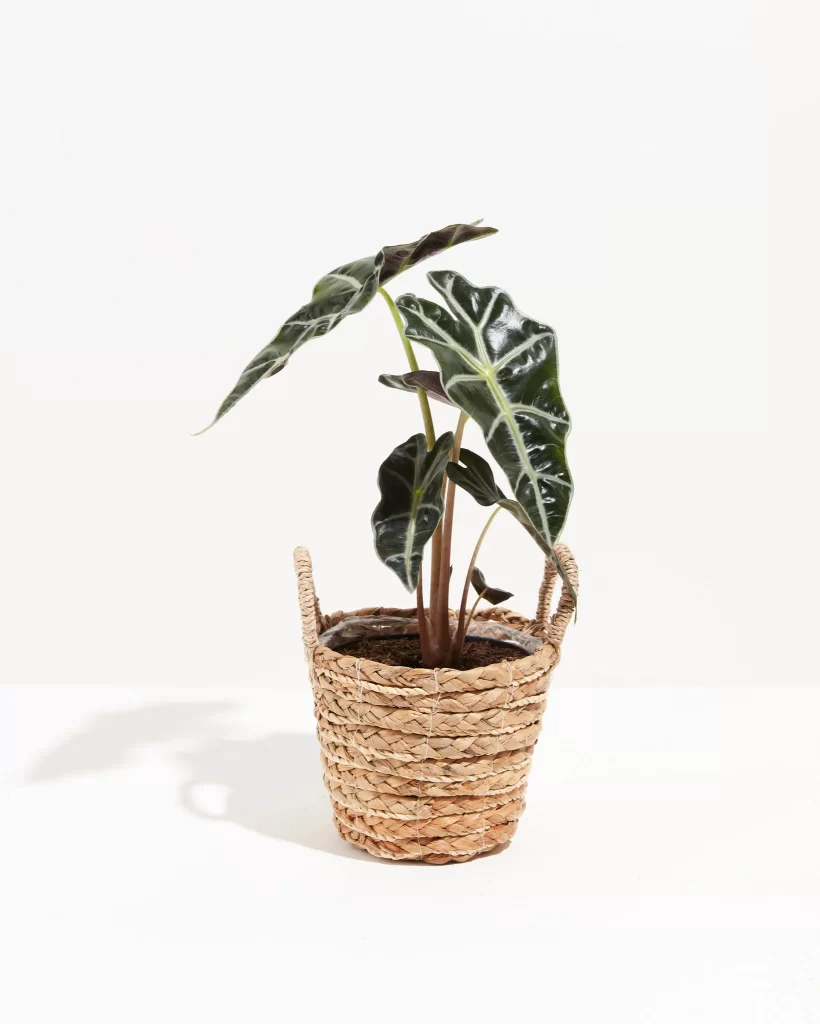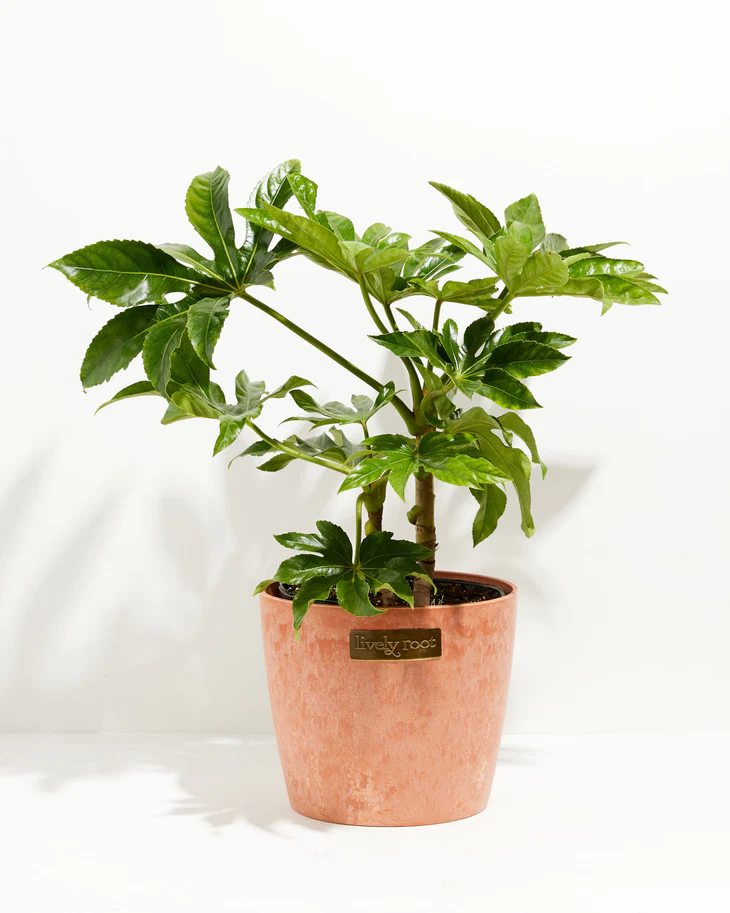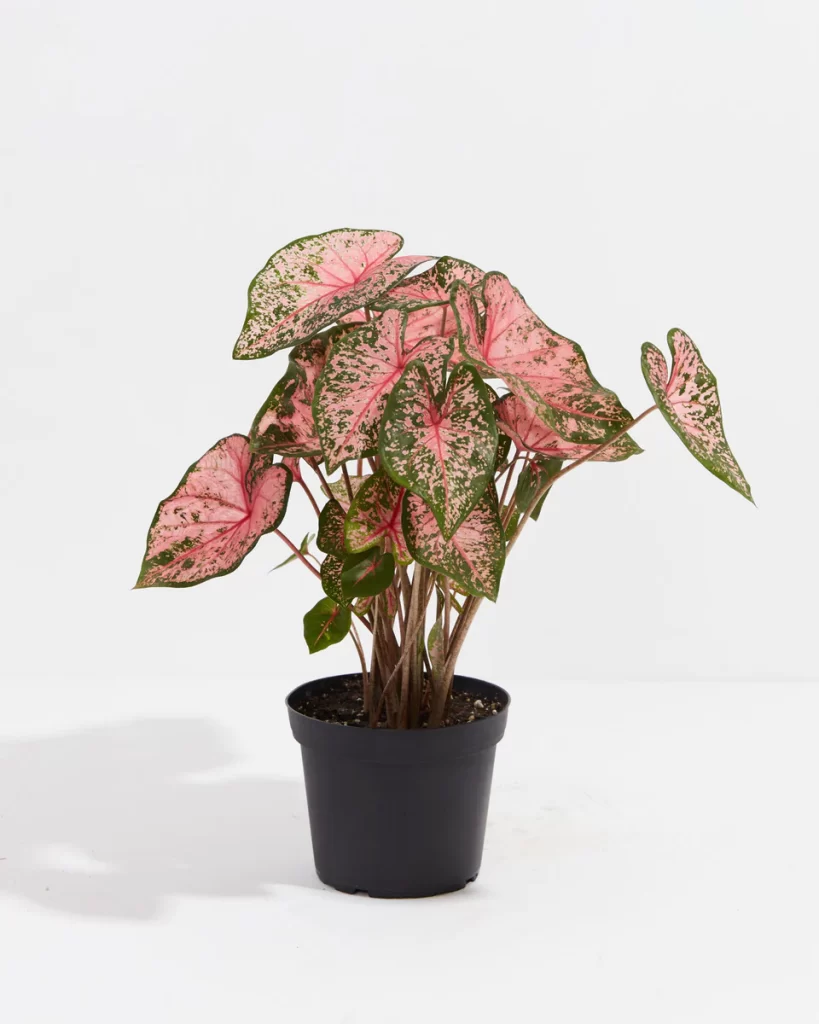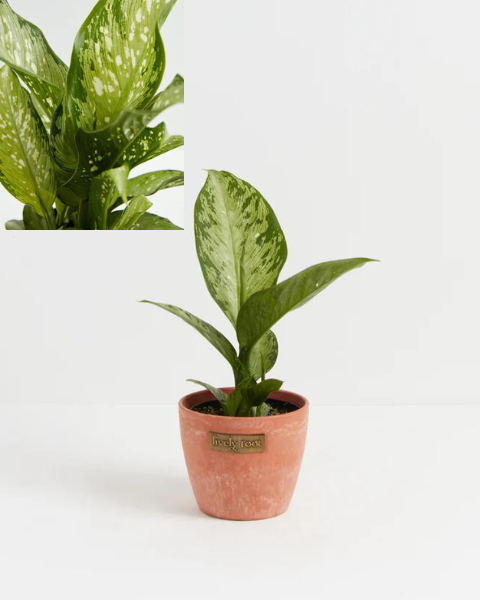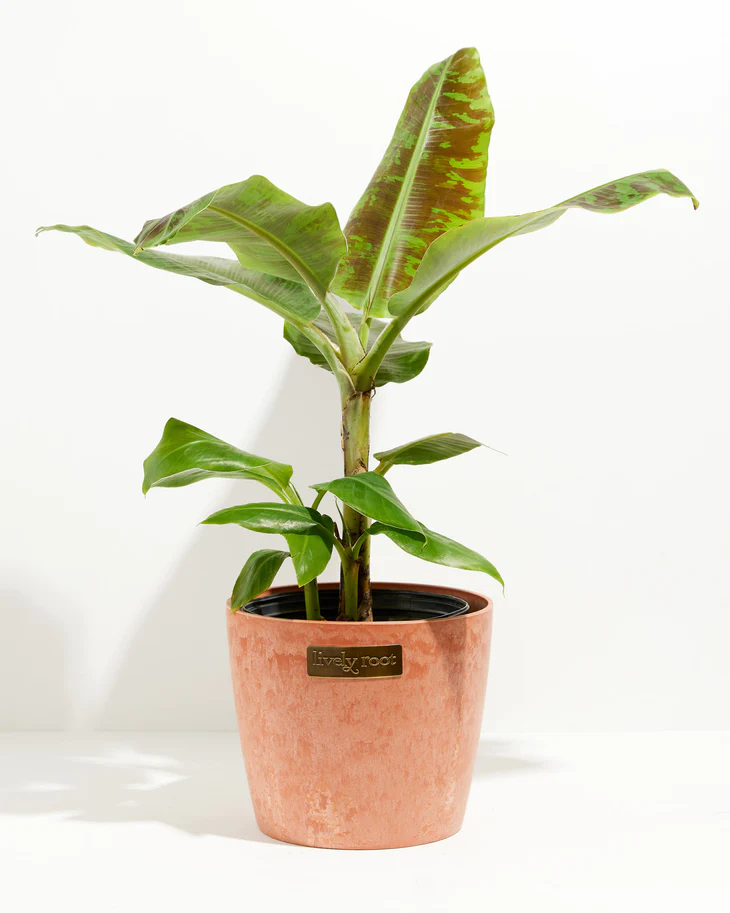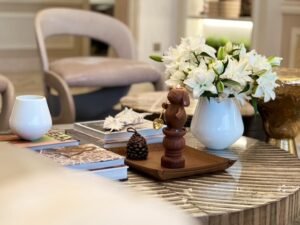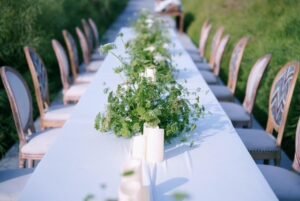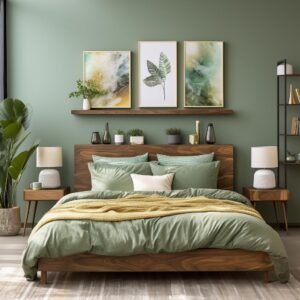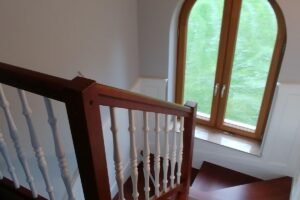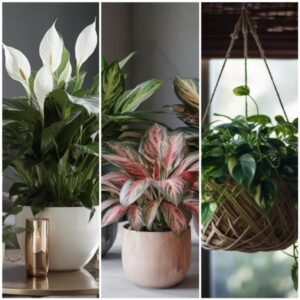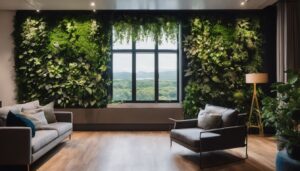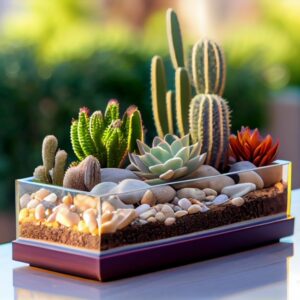Table of Contents
Last Updated on April 10, 2024
Having indoor plants can make your living space lively, energized, and inviting. They add beauty and color to your decor and bring numerous benefits, such as improving air quality, reducing stress, and increasing productivity. This post will introduce you to the top big leaf indoor plants that help you complete your biophilia design home.
How to Elevate Your Vibe by Adding Big Leaf Indoor Plants
Adding big leaf indoor plants to your living space is a simple yet effective way to elevate your vibe and create a more inviting atmosphere. These lush botanicals add a touch of greenery and bring in a sense of tranquility and freshness. Here are some tips on how to enhance your surroundings by incorporating big leaf indoor plants:
- Choose the Right Plant: Selecting the right big leaf indoor plant for your space and lighting conditions is crucial. Before purchasing, consider factors such as size, shape, and care requirements.
- Create Focal Points: Use big leaf indoor plants as focal points in your room to draw attention and make a statement.
- Mix and Match: Experiment with different varieties of big leaf indoor plants to create visual interest and diversity in your decor. Combine plants with varying textures, colors, and shapes to add depth to your space.
- Incorporate Natural Elements: Pairing big leaf indoor plants with natural elements like wood, stone, or rattan can help create a harmonious connection between the indoors and outdoors. Opt for earthy pots or baskets to complement the organic feel of the plants.
- Proper Placement: Ensure that your big leaf indoor plants receive adequate light without being exposed to direct sunlight for extended periods. Rotate them occasionally to promote even growth and prevent wilting.
- Regular Maintenance: Keep your big leaf indoor plants healthy by watering them regularly, dusting their leaves, and monitoring for any signs of pests or diseases. Pruning dead foliage will encourage new growth and maintain their overall appearance.
Following these simple steps, you can effortlessly elevate your vibe by adding big leaf indoor plants to your living space. Not only will they enhance the aesthetic appeal of your home, but they will also contribute to a healthier environment filled with positive energy and serenity.
Top 9 Big Leaf Indoor Plants for Your Home
Giant Bird of Paradise
Care Level: easy, low-maintenance
Light: requires bright and indirect light
Temperature: 60°F—80° F
Water: well-draining soil; allow the soil to dry out completely between waterings.
Fertilizing: Monthly
Re-potting: 2-years
Pet-friendly: mildly toxic
The Giant Bird of Paradise, also known as the White Bird of Paradise, is a native species of South Africa known as Strelitzia Nicolai.
The Giant Bird of Paradise is characterized by its large, broad, and banana-like leaves that can grow up to six feet tall and two feet wide in the right conditions. These leaves form a fan-like canopy that adds a dramatic tropical accent to any living space with higher ceilings.
One of the Giant Bird of Paradise’s most striking features is its beautiful flowers. They bloom in clusters of up to eight flowers, which are cream-white or white-blue with orange-tipped accents. These flowers can last for weeks and are a showstopper for any plant enthusiast.
Orange Bird Of Paradise
Care Level: easy, low-maintenance
Light: bright and direct light
Humidity: Low
Temperature: 65°F—80° F
Watering: Allow the soil to dry out completely between waterings
Fertilizing: Monthly
Re-potting: 2-years
Pet-friendly: Toxic
The Orange Bird of Paradise (Strelitzia reginae) is a stunning flowering plant native to the eastern coastlines of South Africa. It is a standard-sized plant with sword-like leaves and smaller orange and blue flowers, distinct from the Giant white Bird of Paradise. It can grow up to 3-5 feet tall and wide and prefers full sun or part shade with regular watering.
This virtually problem-free perennial is easy to care for and makes an excellent addition to any garden or container.
Fiddle Leaf Fig
Care Level: a little extra care
Light: medium indirect light
Humidity: High; Spritz occasionally
Temperature: Warm and humid 60—75° F
Watering: keep moist, but not soggy side
Fertilizing: Monthly
Re-potting: yearly
Pet-friendly: Toxic
Fiddle leaf figs (Ficus Lyrata) are native to tropical regions of Western Africa, from Cameroon to Sierra Leone. Its signature feature is its large, dark green, violin-shaped leaves that boast a velvety texture and are up to 12 inches long, making them an excellent indoor plant option. Besides, Fiddle Leaf Figs can clean the air of toxins such as benzene, toluene, and formaldehyde, but they are also believed to reduce stress, increase happiness, and even boost creativity.
In recent years, the popularity of fiddle leaf figs as indoor plants has grown exponentially, making them one of the most sought-after plants globally.
Philodendron Birkin
Care Level: easy, low-maintenance
Light: medium indirect light
Humidity: high
Temperature: 60°F—75° F, away from drafts and cold windows.
Watering: Avoid overwatering as it can suffer from root rot. Add water when the top several inches of soil are dry.
Fertilizing: every two weeks
Re-potting: 2 year
Pet-friendly: mildly toxic
The Philodendron Birkin originates from Brazil and Paraguay. Its large, dark green leaves are liberally streaked with creamy white pinstripes, making it a beautiful and unique addition to any home. This slow-growing evergreen perennial may take ten years to reach its mature height of 3 feet, with a similar spread. With proper care, the Philodendron Birkin can make a stunning statement in any home or office space.
Elephant Ear (Alocasia Polly)
Care Level: a little extra care
Light: bright indirect light
Humidity: High
Temperature: Humid environment 60°F—85° F
Watering: Let the soil dry between waterings
Fertilizing: seasonally
Re-potting: 2 year
Pet-friendly: toxic
The Elephant Ear plant is an impressive tropical foliage plant native to Southeast Asia, India, and the Pacific Islands. It is known for its large, heart-shaped, or arrow-shaped leaves, reaching 18 inches long. It loves a lot of light and humidity, so it’s perfect for placing in the bathroom or close to your shower.
Paper Plant (Fatsia Japonica)
Care Level: easy, low maintenance
Light: medium to high indirect light
Humidity: medium
Temperature: 65°F—75° F
Watering: regular watering and then allow the soil to dry out between each watering
Fertilizing: Monthly
Re-potting: 2 year
Pet-friendly: safe
Fatsia Japonica, also known as Big-Leaf Paper Plant, Figleaf Palm, and Formosa Aralia, is a popular choice for those who want to add a big-leaf indoor plant to their collection. It features huge, deeply lobed leaves that grow to about one foot in width atop long leaf stems. It blooms in autumn, and the fruit ripens mid to late winter. These glossy evergreen leaves provide a lush, tropical feeling indoors and can be used as house and outdoor landscape plants.
Pink Beauty Caladium
Care Level: easy, low maintenance
Light: bright and indirect light
Humidity: High
Temperature: 70°F—85° F
Watering: keep the soil evenly moist but not saturated
Fertilizing: Monthly
Re-potting: rarely
Pet-friendly: Toxic
Its mottled foliage is splashed in bubble gum pink and vibrant green, with dark pink veins running through it. One of Caladium’s standout features is its ability to thrive in low-light environments, making it an excellent choice for those who may not have access to much natural sunlight. With its striking foliage and resilience, it’s no wonder Caladium is considered one of the top big-leaf indoor plants.
Dieffenbachia Tiki
Care Level: easy, low maintenance
Light: Low to medium indirect light
Humidity: Medium, spritz occasionally
Temperature: 60°F—80° F
Watering: Low
Fertilizing: Weekly
Re-potting: 2-year
Pet-friendly: Toxic
Originating in the Caribbean and South America, Dieffenbachia Maculata “Tiki” (also known as Dumb Cane) is a beautiful and exotic houseplant that can be used to decorate indoor spaces. It has large decorative leaves in dark and light shades of green, with silver-green color and white spots or streaks. It can grow between 2m and 3m tall in ideal conditions.
Dwarf Banana Plant (Musa)
Care Level: Easy
Light: Bright, indirect light
Humidity: Consistently moist soil, but not soggy
Temperature: 64°F—80° F
Watering: Enjoys being on the moist but not soggy side
Fertilizing: Seasonally
Re-potting: 2-year
Pet-friendly: Toxic
The Dwarf Banana Plant, scientifically known as Musa, features broad, attractive leaves and can be grown in a pot or planted in-ground. Musa plants have long been cultivated and grown indoors since Victorian times. These plants are not only popular in tropical regions of Asia but across the globe, prized for their fantastic foliage and exotic fruit.
Conclusion
These big leaf plants will add beauty and interest to your living space, improve indoor air quality, reduce stress, and create a calming and relaxing home environment. Choose the one that matches your style and taste, and watch your indoor oasis come to life!

